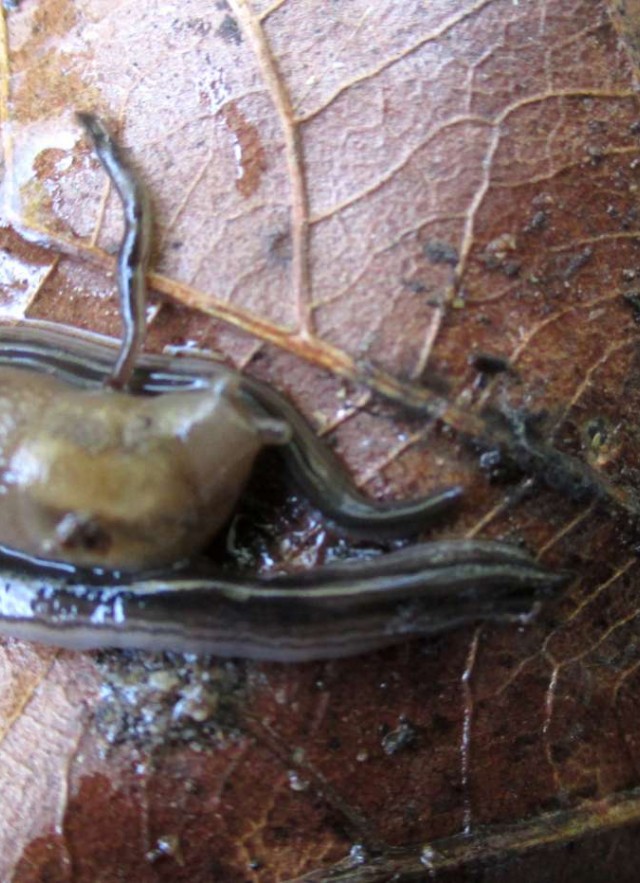The Hart Museum remains closed. Los Angeles County has approved a plan to transfer the William S. Hart Museum and Park from the County to the City of Santa Clarita.
Slimy Friends Or ... ?
Can two animals who are not natural friends hang out together?

While looking for snails and slugs on the campus of Cal Poly Pomona recently, I uncovered this cozy scene: an Ambigolimax slug nestled between two land planarians.
Despite my disappointing photography, the result of which is the blurry photo you see here, this slug/planarian coupling is noteworthy for a few reasons.
- You can see their differences. Land planarians are often mistaken for slugs, and although these animals are both slimy and found in the same moist, leaf litter habitat, the planarian belongs to the flatworm (or Platyhelminthes) phylum, while the slug belongs to phylum Mollusca. The planarian is much thinner than any slug and often has two dark brown bands running the length of its body. The body of slugs is stout compared to the very worm-like planarians and less smooth, and the head of slugs bears two distinct eye stalks.
- Both of these organisms are introduced species. The Ambigolimax slug is likely the most widespread introduced slug in California. It is native to Europe and since establishing populations in California has become a ubiquitous garden pest likely as a result of the horticulture trade. When it first appeared in California is unknown. The planarian, Dolichoplana striata, originally hails from Asia. They also have become common in California as a result of the horticulture trade.
- Why are they snuggling together? What is perplexing about the association between these slimy friends is that planarians are predatory. They eat earthworms and other small organisms in the leaf litter, including snails and slugs. So, perhaps instead of a congenial cuddle, this scenario more accurately depicts a slug that is doomed to be dinner!
For more information about the fascinating animals living in leaf litter, see here, here, and here.